Altcoins
Altcoins 101: Definition, Explanations, Examples
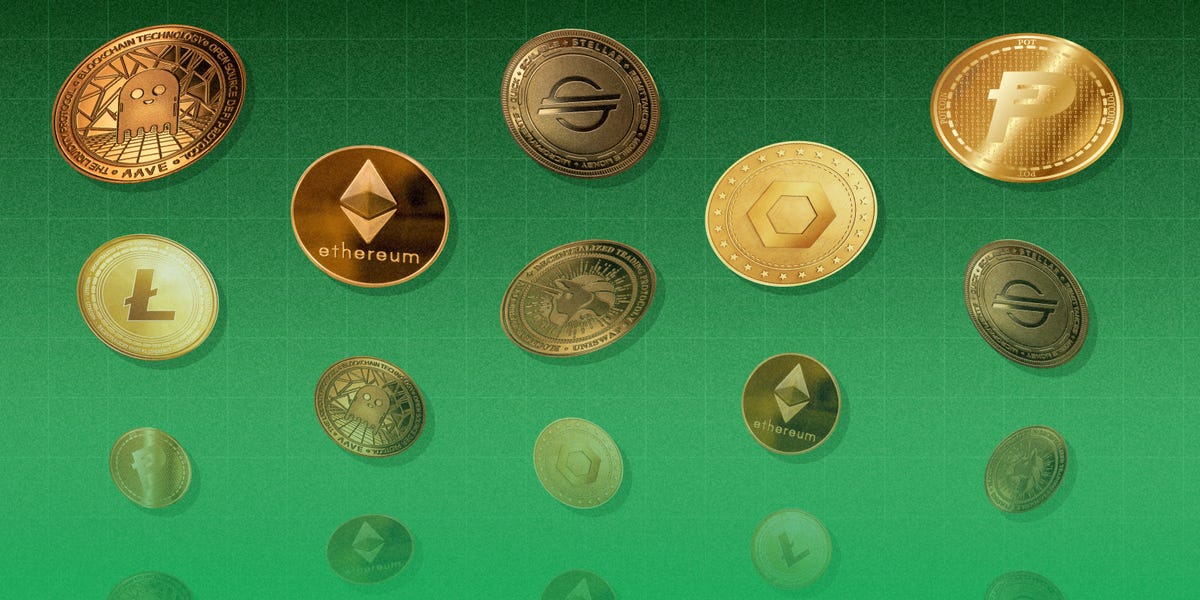
Paid non-client promotion: Affiliate links for the products on this page are from partners that compensate us (see our advertiser disclosure with our list of partners for more details). However, our opinions are our own. See how we rate investing products to write unbiased product reviews.
- Altcoin is short for “alternative coin” and — as the name suggests — is an alternative cryptocurrency to Bitcoin.
- Altcoins have become a major segment of the cryptocurrency markets, with projects like Ethereum (ETH), Stellar Lumens (XLM), and Uniswap (UNI) distinguishing themselves as platforms with innovative capabilities.
- The altcoin markets are characterized for their volatility and are highly speculative investments.
Since the emergence of Bitcoin, the concept of a decentralized, trustless peer-to-peer (P2P) payment network has inspired an entire class of digital assets. The crypto markets are a product of Bitcoin’s success, and the fast-growing space consists of more than 9,000 altcoins.
Now we have altcoins, which began to emerge in 2011 in an attempt to reinvent Bitcoin, with their own rules and improvements on different features.
What is an altcoin?
Altcoin is a cryptocurrency alternative to Bitcoin — its name is a portmanteau of “alternative” and “coin.” Since Bitcoin is widely regarded as the first of its kind, new cryptocurrencies developed after are viewed as alternative coins — or altcoins. The emergence of altcoins began around 2011, with the first generation formed using the same blockchain engine as Bitcoin.
The first altcoin was Namecoin, which is based on Bitcoin’s code and was released in April 2011. Namecoin is integral to the history of altcoins in that it showed that there’s enough room in the crypto markets for more than one kind of coin.
Blockchains today can run several hundreds of “altcoins,” fueling similar currency projects with unique rules and mechanisms. Altcoins like Ethereum can provide developers with a toolkit and programming language to build decentralized applications into the blockchain.
Insider’s Featured Crypto Apps
Chevron icon
It indicates an expandable section or menu, or sometimes previous / next navigation options.
Chevron icon
It indicates an expandable section or menu, or sometimes previous / next navigation options.
Editor’s Rating
4.14/5
A five pointed star
A five pointed star
A five pointed star
A five pointed star
A five pointed star
Editor’s Rating
4.34/5
A five pointed star
A five pointed star
A five pointed star
A five pointed star
A five pointed star
Understanding how altcoins work
To understand how altcoins work, it’s good to first understand how blockchain technology works — which is where all cryptocurrencies operate.
The blockchain network is a distributed ledger that stores data like cryptocurrency transactions, NFT ownership, and decentralized finance (DeFi) smart contracts. This ledger is often referred to as a “chain” comprising “blocks” of data, which are used to verify new data before additional blocks can be added to the ledger.
This network, on which Bitcoin operates, is groundbreaking because it’s a decentralized, trustless, P2P payment network that functions without a central authority or entity facilitating transactions. And altcoins function on the exact same premise as Bitcoin: to operate using this blockchain technology.
However, there have been some altcoins that have emerged to instead improve on the flaws of Bitcoin or to achieve some other goal. For example, Litecoin was designed by former Google engineer Charlie Lee as a “lite version of Bitcoin.”
Understanding forks
A fork refers to an update in network protocol (the open source software blockchains run on). There are two kinds of forks: a hard fork and soft fork. A soft fork is a minor upgrade to the software, and typically means nothing for users. A hard fork is a major change to the network, and requires users/miners to update to the latest software in order to continue mining. If developers decide they do not like the direction a blockchain network is going in, they can do a hard fork and create a new coin. Since 2009, Bitcoin has seen over 400 hard forks.
In the news: Crypto and celebrity influencers have come under fire for promoting cryptocurrencies. Even social media platforms like TikTok have banned crypto promoters from the platform.
Here are the two key things to know about altcoins.
Altcoins are a highly speculative and volatile investment. Speculation is a powerful driver of the crypto markets so it’s important to do your research before investing in any altcoin. Half-baked whims and trading based on rumors are exactly what the experts advise against.
“The altcoin space is full of innovation and change. There are some interesting projects, and always many new projects. You’ve got to be very well informed and somewhat cautious,” says Shone Anstey, CEO of LQwD. “Before plunking down hard-earned money, you need to do the research. Who is the team behind it, especially on the engineering side? What problem are they solving? And who are the financial backers?”
The decentralized, intangible, and often misunderstood nature of cryptocurrencies in general makes predicting the long-term, steady success of an altcoin project difficult to predict. Some altcoins, like Ethereum, have maintained their position in the market through constant innovation and the strength of their community. Speculation has a more dramatic effect on newer altcoins. External factors like public perception, Bitcoin price fluctuation, or a meme on Reddit can oftentimes cause drastic price fluctuations.
While the crypto community stands united on its long-term bullish outlook for Bitcoin, the temptation of selling coins for short-term profits is built into the crypto zeitgeist. The crypto community created the term “hodl” in an effort to encourage people to hold on to their crypto assets for the long term. “Hodl” means “hold on for dear life,” and to resist the impulse of selling when the value of their crypto drops or rises.
Quick tip: Smart contracts are programs that are stored on blockchain that execute when certain conditions are met.
Cryptocurrency takes a toll on the environment. Bitcoin’s energy consumption is a well-known flaw. As of August 2021, Bitcoin’s energy consumption is 151.57 TWh according to Digiconomist’s Bitcoin Energy Consumption Index — that’s comparable to what the entirety of Malaysia uses in energy.
The culprit for the tremendous costs of energy lies with the “proof of work” (PoW) consensus algorithm, which is how transactions are verified. And as Bitcoin mining has become more competitive, the computing power required to profitably mine new bitcoins is represented in factories loaded with servers all working toward solving the network’s algorithms.
The PoW consensus mechanism is responsible for driving the competition for faster and more powerful computational processing power. The faster a miner’s computer can complete the formula, the higher their odds of winning a block reward. Over time, miners have developed computer hardware with the sole function of processing the PoW consensus algorithm.
This has evolved from a miner running a program in the background of their PC to entire mining farms. Miners (or a pool of miners) will buy factories in countries where electricity is cheap and fill them with thousands of mining rigs. The energy required to keep the rigs running 24/7, combined with the fans and coolant systems to prevent overheating and fires, has made crypto mining an environmental disaster.
The emergence of “green coins”
Bitcoin’s carbon footprint has provided an opportunity for altcoins with greener consensus mechanisms to market themselves as “green coins.” While proof of work is the main culprit for the Bitcoin energy crisis, blockchains like Polkadot (DOT) and Cardano (ADA) operate on proof of stake consensus mechanisms. Compared to the energy-hungry PoW, staking requires no mining in order to participate and earn coins. The success of Polkadot and Cardano proves that people can participate in crypto while being environmentally friendly.
Quick tip: Proof of work is the consensus mechanism used by Bitcoin and many other altcoins to audit transactions on the blockchain and “mine” new crypto. Crypto mining is solving computational formulas to audit transactions on the blockchain. Completing the formula means a chance at receiving a newly minted BTC reward.
Types of altcoins
Over time, there have been many altcoins that have come along. And now, there are the main types:
- Mining-based: Altcoins that are mining-based are created through the process of mining, like Bitcoin. One example of a mining-based coin is Litecoin.
- Stable coins: These types of altcoins are a new subset of the crypto market that’s meant to reduce volatility. By design, they’re digital assets with their value pegged to fiat and physical assets (off-chain) and crypto collateral (on-chain). Algorithmic stablecoins are not backed by on-chain or off-chain assets, but are governed by a smart contract at their core.
- Security tokens: These types of altcoins are a digital or liquid asset that represents an ownership stake in a tangible asset. Stored on a distributed ledger, security tokens are the blockchain equivalent to shares, but can represent a stake in IP, a car, property, etc.
- Utility tokens: Once very popular in the 2017 initial coin offering (ICO) boom, utility tokens are not pegged to any currency or tangible value. In exchange for capital in the early stages of an ICO, investors would receive a number of utility tokens in exchange for their investment determined by the company or project owner. The utility tokens will serve as a coupon or voucher after funding to purchase goods and services from the issuer.
Quick tip: One of the main benefits of blockchain technology is transparency. If something is on the blockchain, it means it is visible, permanent, and accessible to the public. On-chain typically refers to a transaction that is performed and recorded on the blockchain. Off-chain is a transaction not directly recorded on the blockchain.
Staking an altcoin
Staking is the passive-investing strategy where an investor holds funds in a cryptocurrency wallet in order to earn rewards over time. When an investor chooses to stake their holdings, the network can use it to forge new blocks on the blockchain. The process of staking supports the process of PoS work because it requires participants to support it. And so stakers are essentially helping to make this happen.
Also, staking is incredibly energy-efficient — unlike mining. According to the Ethereum Foundation, the switch to a PoS system will reduce energy costs by 99.95%.
7 notable altcoins
While no altcoin has managed to “dethrone” Bitcoin in value, many projects have proved themselves worthy enough to a global community of investors and developers:
1. Ethereum (ETH)
The implementation of smart contracts in the Ethereum blockchain has led to decentralized apps/games like Cryptokitties.
Rachel Mendelson/Insider
The second-largest blockchain in crypto, Ethereum’s evolution has taken it from an asset to an application. Founded by Vitalik Buterin in 2013, Ethereum is a distributed blockchain platform for smart contracts and dApps (decentralized applications). With its native token, ether (ETH), users can interact with the Ethereum platform. Ether can be traded on most crypto exchanges, used to pay transaction fees, or as collateral for ERC-20 tokens, which have DeFi utility.
Ethereum’s integration with smart contracts via the Solidity programming language has distinguished the project from Bitcoin. A smart contract is a self-executing code that can run on the blockchain.
2. Chainlink (LINK)
Chainlink is developed by a global community.
Rachel Mendelson/Insider
Launched officially in 2019 on the Ethereum blockchain, Chainlink is a decentralized oracle network that’s meant to expand on smart contracts. In a nutshell, it connects smart contracts with “off-chain” data and services. The network is built around the LINK network and token and has two parts: on-chain and off-chain.
The on-chain component comprises oracle contracts on the Ethereum blockchain, which oversee and process data requests that come in from users. The off-chain component is made up of off-chain oracle nodes that connect to the Ethereum network, which are responsible for processing external requests that are later converted to contracts.
3. Aave (AAVE)
Aave is the largest non-custodial lending DeFi protocol of its kind.
Rachel Mendelson/Insider
The AAVE is an open-source DeFi lending protocol that allows anyone to loan or borrow crypto without an intermediary. As a lender, you can deposit funds — which are allocated into a smart contract — where you can earn interest based on how Aave is performing in the market. Making a deposit means you can also borrow by using your deposit as collateral.
Rebranded from ETHLend following a successful ICO in 2017, Aave switched from a decentralized P2P lending platform into a liquidity pool model. This means loans are acquired from a pool instead of an individual lender. Since 2020, the Aave Protocol has been an open-source and non-custodial liquidity DeFi protocol for earning interest on deposits and borrowing assets. Holders of AAVE can decide on the direction of the project by voting on and discussing proposals.
4. Stellar Lumens (XLM)
The Stellar Project was created in 2014 by Ripple co-founders Jed McCaleb and Joyce Kim.
Rachel Mendelson/Insider
Stellar is an open-source payment network that doubles as a distributed intermediary blockchain for global financial systems, designed so all the world’s financial systems can work together on a single network. Stellar began in 2014 when Ripple co-founder Jed McCaleb disagreed with the direction of the Ripple project. The ethos behind Stellar’s development is to make international money transfers possible for the everyday person.
While Stellar is an open-source network for currencies and payments, Stellar Lumens (XLM) is the circulating native asset on the network. Stellar keeps its ledger in sync using its Stellar Consensus Protocol (SCP). Instead of relying on a miner network, SCP uses the Federated Byzantine Agreement algorithm, enabling faster transactions.
5. Uniswap (UNI)
Uniswap pioneered the Automated Market Maker Model. Automated market makers (AMMs) are a type of decentralized exchange that rely on smart contracts to set the price of tokens.
Rachel Mendelson/Insider
Uniswap is a decentralized exchange ecosystem built on the Ethereum blockchain. Launched in 2018, Uniswap uses an on-chain automated market maker. One of Uniswap’s unique features is that anyone can be a market maker by depositing their assets into a pool and earning fees based on trading activity.
Uniswap uses an automated market maker protocol that executes trades according to a series of smart contracts. The smart contracts automate price discovery, allowing users to swap one token for another without an intermediary. In traditional finance, market makers are usually brokerage houses with incentives that can cause a conflict of interest.
6. PotCoin ($POT)
There will never be more than 420 million PotCoins in circulation, a nod to 4/20 or what’s known as “Weed Day.”
Rachel Mendelson/Insider
PotCoin is a Canadian-based digital currency that was launched in 2014 to allow consumers to buy and sell legal cannabis products. PotCoin was introduced as a solution for cannabis enthusiasts and the industry looking to legally transact at a time when banks were unable to do so.
PotCoin is an open-source cryptocurrency forked from the Litecoin core. There are subtle changes to the PotCoin protocol including a shorter block generation time and the increased 420 million max supply of PotCoins. Potcoin switched from a Proof of Work mechanism to Proof of Stake in 2016 to make supporting the network more accessible and less harmful to the environment.
7. Litecoin (LTC)
Litecoin is one of the most widely used altcoins in the market, helped by the fact that it has its own Visa card.
Rachel Mendelson/Insider
One of the first-generation altcoins made in 2011, Litecoin is a cryptocurrency based off of Bitcoin. Key things that distinguish Litecoin from Bitcoin include block time (four times faster block times than Bitcoin), supply (Litecoin has a max supply of 84 million while Bitcoin’s max supply of 21 million), its hashing algorithm, and distribution.
Dubbed the “digital silver” to Bitcoin’s “digital gold,” Litecoin’s goal was to optimize the Litecoin asset while preserving the best parts of Bitcoin.
Quick tip: The ERC-20 standard is a set of rules applied to smart-contract tokens on the Ethereum blockchain. The flexibility and fungibility of the ERC-20 token allow dApp developers to create utility tokens, security tokens, or stablecoins.
The bottom line
Altcoins have come a long way since 2011, and continue to prove themselves as more than just an “alternative to Bitcoin.” The crypto space is a fast-moving and increasingly popular point of interest for investors. Thanks to the innovation and integration of crypto into mainstream business, people can safely and legally buy altcoins on their phones or computer.
Easy access to the crypto markets doesn’t mean it isn’t risky. Before investing in an altcoin, ask yourself: Have you researched and performed enough due diligence? Would you be able to explain the project to your family or friends at the dinner table? Whether you want to trade altcoins full-time or just “hodl” your Bitcoin, the choice is yours. Listening to the experts, evaluating the risks, and assessing your financial goals are keys to investing responsibly.


Ryan Austin is a writer, researcher, and content strategist who specializes in crypto, blockchain, and FinTech. Based in New York, Ryan has a decade of experience working with investment research, financial services, and PR firms including Institutional Analyst, Inc. and Newswire.com. Today, Ryan consults with various agencies, crypto platforms, and FinTech companies.
In addition to Insider, you can find his work on SeekingAlpha, OKEx, and Prime Trust. Outside of the office, Ryan enjoys walking with his dog, instigating his girlfriend, and Brazilian jiu-jitsu. You can connect with Ryan on LinkedIn, or reach out to him directly at Ryan.Austin.Career@gmail.com.
Read more
Read less
Top Offers From Our Partners


Altcoins
Will ZRO Price Reach $10 During This Crypto Bull Market?
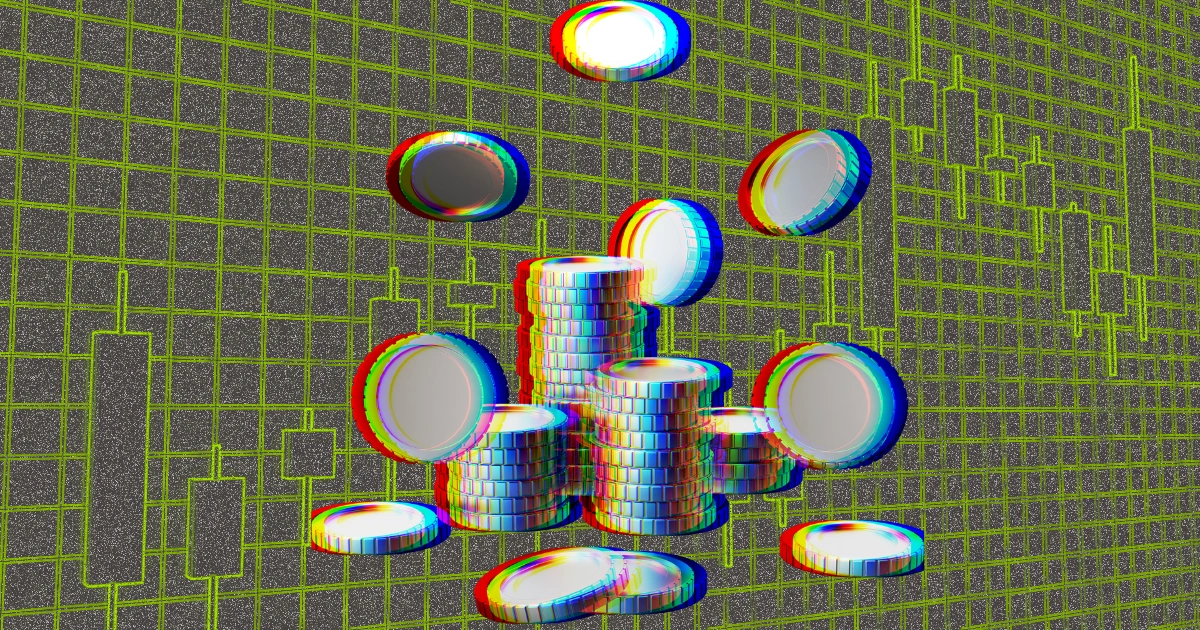
The cryptocurrency market has seen a negative price action with major crypto tokens seeing a decline in their respective portfolios. Also, the market leader, Bitcoin price has dropped by $1 and is currently trading with a price tag of around $66,500.
Layer Zero later showed similar price action as it recorded a decline in its portfolio in the past few hours. With rising volatility, will ZRO price regain momentum and record a new all-time high (ATH) in the coming weeks?
Layer Zero (ZRO) Price Action:
Despite a decline of about 5% in the last day with a trading volume of $280.55 million, the ZRO price is up 16.72% in the last seven days and 82.74% since its inception.
TradingView: ZRO/USDT exchange rate
With a trading price of $4,943, a circulating supply of 110 million ZRO tokens, and a total supply of 1 billion tokens, Layer Zero price has secured the 120th position with a market cap of $530.082 billion.
The SMA technical indicator shows a potential bullish convergence in the 1D time frame, suggesting growing bullish sentiment in the cryptocurrency sector.
Furthermore, the Moving Average Convergence Divergence (MACD) shows a steady decline in the red histogram with its averages recording a declining bearish sentiment. This highlights a high possibility of a bullish reversal in the near future.
Will ZRO Price Hit New All-Time High This Month?
If the market regains momentum, Layer Zero price will prepare to test its all-time high (ATH) of $5,570 in the coming weeks.
On the contrary, if the bears regain momentum, ZRO price will retest its $4,525 support level. Also, if the bears continue to dominate the market, Layer Zero price will plummet towards its lower $3.50 support level in the near future.
Altcoins
Litecoin and Dogecoin top wallet count
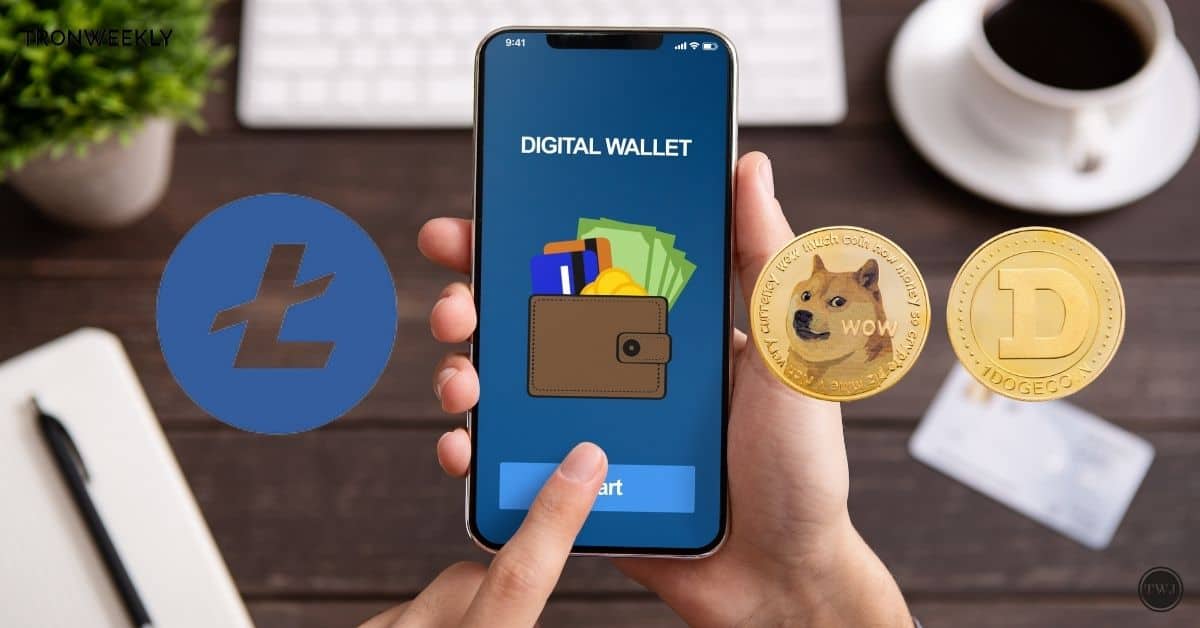
Litecoin [LTC] and Dogecoin [DOGE] have emerged as the major players among the altcoin crew in attracting significant amounts of non-empty wallets or holders. This underscores the growing interest of investors in these alternative cryptocurrencies. Santiment, a leading data analytics platform, observed the trend in a ten-year study.
The report shows that Litecoin, often dubbed as the “silver of Bitcoin,” held the highest number of holders with a whopping 8.08 million non-empty wallets. On the other hand, Dogecoin, the oldest meme-coin cryptocurrency, secured the second position with 6.69 million wallets.
Recently, LTC has processed an average of $2.85 billion in transactions over $100,000 per day, according to data from IntoTheBlock. This represents over 50% of Litecoin’s market cap, a significant milestone among Layer 1 protocols.
In contrast, Dogecoin, despite boasting nearly three times the market cap of Litecoin, only handles $590 million in large transactions. This disparity highlights LTC’s appeal to large-scale investors and the growing activity of whales within its network.
Analysts attribute the increase in high-value transactions to growing confidence in Litecoin’s stability and utility as a trusted digital currency.
Litecoin: Shiba Inu joins the group
Other notable altcoins that have shown robust growth include Exchange rate risk which stands at 5.24 million wallets, while Cardano [ADA] contains 4.48 million of them. Another meme coin that made it to the list is Shiba Inu [SHIB]collecting 1.39 million non-empty wallets. Chainlink also [LINK]A decentralized blockchain oracle network has achieved a whopping 722,000 non-empty wallets. All these numbers indicate investor interest in utility-oriented altcoins.
A surge in non-empty wallets reflects an increase in altcoin adoption. Several factors could be driving this trend, including ease of use, lower transaction fees, and diversification. While the data suggests a promising development, it is important to note that non-empty wallets do not necessarily equate to active users. It is also critical to understand the levels of engagement and overall investment activity within these altcoin communities.
Overall, the rise of non-empty wallets paints a positive picture for the altcoin market. As the cryptocurrency ecosystem continues to gain traction, it will be interesting to see how these trends play out and how altcoins fit into the broader financial landscape.
Altcoins
Three Altcoins Poised for Significant Growth in 2024: ETFS, OP, BLAST

Disclosure: This article does not constitute investment advice. The content and materials on this page are for educational purposes only.
Leading cryptocurrency analysts are predicting a 30-fold rally for ETFSwap (ETFS), Optimism (OP), and BLAST, promising substantial gains for investors before the end of the year.
ETFSwap (ETFS), Optimism (OP), and BLAST are three bullish altcoins that, according to popular cryptocurrency analysts, are expected to increase 30-fold and expand the portfolios of smart investors who aim to earn life-changing money before the end of the year.
ETFSwap 30x Pre-Sale Token Will Kick Off Altcoin Bull Rally Later This Year
ETF Swap (ETF) The defi token sale at $0.01831 in its viral pre-sale has been hyped by popular cryptocurrency analysts to scale $1,000 investments of smart investors into $30,000, having identified its 30x potential among altcoins, including Optimism and BLAST. The ETFS defi token is built to scale and experience mega rallies, as it is a utility altcoin leveraged by smart crypto investors who trade it with the most sought-after tokenized ETFs listed on its defi trading platform.
Some of the industry’s best tokenized ETFs listed for trading on the defi platform include spot Bitcoin, commodities, stocks, bonds, leveraged, market, and fixed income ETFs, among others. In addition to these valuable tokenized ETF investments, the defi platform lists various profitable altcoin pairs that can yield high returns for crypto traders when traded on futures and perpetual contracts. Smart crypto investors and institutional traders are widely using the defi platform with ample liquidity as it offers a provisional leverage of 100x to easily flip investment profits up to 54,000%.
ETFSwap is a multi-faceted investment platform that allows smart crypto investors to trade their favorite altcoin holdings in defi mode. It also allows them to stake their tokenized ETFs on the defi platform and earn passive income from the returns. Smart traders and loyal investors enjoy 87% APR rewards when they provide instant liquidity to the defi platform by staking their assets. They also become part of the tokenization revolution and tap into a $10 trillion ETF economy when they tokenize their valuable real-world assets and trade them on-chain.
The defi platform is trustless and permissionless, allowing crypto investors to fully manage their asset portfolios, transfer unlimited liquidity volumes, and enter into multiple trading positions at will. Crypto investors and traders leverage a defi platform that operates 24 hours a day with full coverage of global financial markets. ETFSwap ensures complete investment protection for smart crypto investors, including veteran traders and small investors, as its defi platform is free from security vulnerabilities.
Leading global security audit firm CyberScope has verified ETFSwap as a highly secure investment platform and ranks it above its competitors. The developers and contributors to ETFSwap’s defi platform have also completed the necessary Quality check SolidProof checks.
Optimism among watchlist altcoins that could boost investment returns up to 30 times
Optimism is the main headline in altcoin news, including ETFSwap and BLAST, which analysts say could add 30-fold to cryptocurrency investor returns in the final quarter of 2024. Altcoin Optimism has gained a lot of popularity and investment attention in the cryptocurrency community, since it was created as a utility token on its own layer-2 blockchain network running on Ethereum.
The Optimism layer 2 blockchain-native altcoin, trading at $1.84, presents a huge investment opportunity as leading analysts predict it will edge behind defi token ETFS in terms of earnings for smart investors.
BLAST Could Bring 30X Rally Surprises to Investors
Altcoin BLAST, considered an underdog by analysts, has the potential to generate 30-fold gains for investors, along with ETFSwap and Optimism, before the end of the year.
The BLAST token runs on its own layer 2 blockchain platform and boasts of being the only L2 platform that offers native yield for stablecoins and ETH. Leading analysts predict that the BLAST token will trade at $0.017 to gain momentum when the ETFS token rallies 30x in the coming months.
Conclusion
ETFSwap’s viral ICO presents a golden investment opportunity for crypto investors looking to make substantial gains before the end of the year. Leading analysts are touting a 30x rally from its undervalued price of $0.01831 alongside altcoins Optimism and BLAST.
To learn more about the ETFS pre-sale, Visit ETFSwap Pre-Sale AND Join the ETFSwap community
Disclosure: This content is provided by a third party. crypto.news does not endorse any products mentioned on this page. Users should do their own research before taking any actions related to the company.
Altcoins
Altcoins Set for Explosive Growth: Analyst Predicts Epic Rally
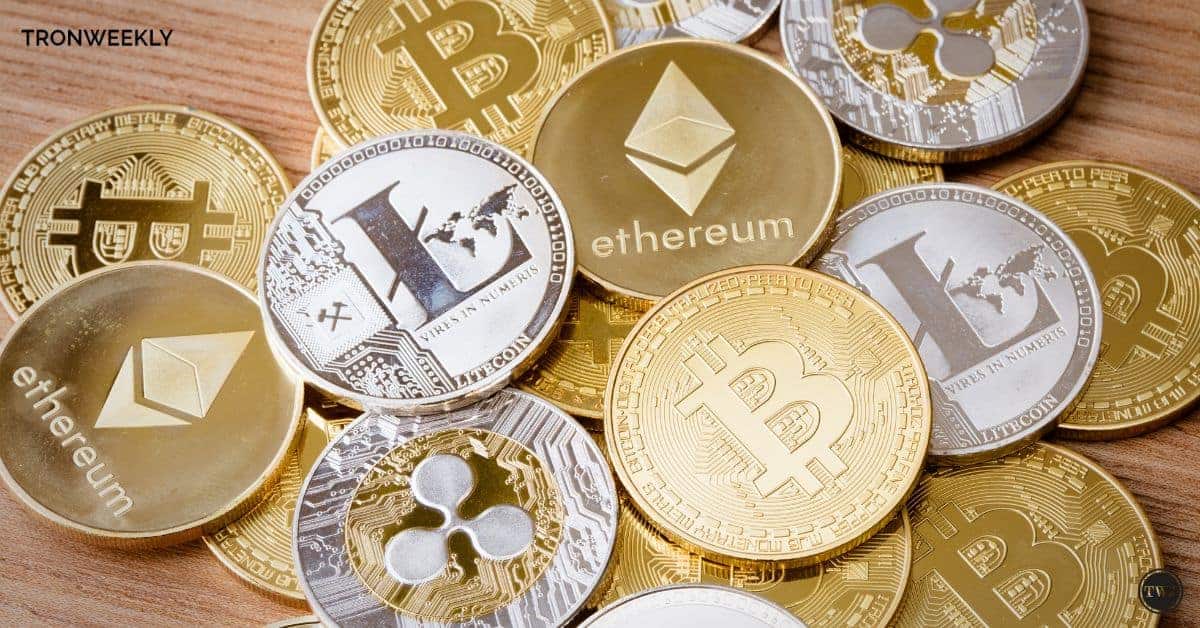
Famous altcoin trader and analyst Captain Faibik expected a huge bull run for altcoins similar to the first quarter of the year 2024. In X’s recent post, the analyst pointed out that the altcoin market is about to experience a major surge.
Captain Faibik focused on the fact that it is necessary to accumulate and hold altcoins, patience will bring results. As Faibik pointed out, most of the altcoins have hit their lowest value and are expected to rise sharply in the coming days. He said that the months of August and September could be a decisive time for altcoins.
This belief of Faibik echoes the general consensus in the markets that the prices of alternative currencies could soon increase. Current market trends suggest that altcoins are in the recovery phase, with many of them already showing positive trends. This expected rally maintains the previous positive trends seen during the year.
Key Trends Signaling Altcoin Surge
Faibik’s analysis involves identifying trends within the market and the actions of different altcoins. He said that the prevailing market situation resembles that of the period before the surge in the first half of 2024. This similarity implies that those investors who stick to their positions and do not rush to sell could make huge profits.
The growing interest of institutional investors also portrays the optimism of investors in digital currencies. Thanks to the growing interest of conventional financial institutions in the cryptocurrency market, many more coins are being recognized and are able to gather substantial investments. This increase in investments is expected to push up the prices of coins and, therefore, stimulate the expected rally.
Despite the volatility in the cryptocurrency market, Faibik remains positive, which is something many investors need in these times. His advice to accumulate and hold altcoins translates to the trading advice of experienced traders who always advise traders to invest in cryptocurrencies with a long-term market perspective.
Captain Faibik’s call regarding the epic altcoin rally in August and September has energized the crypto community. Therefore, as the market situation changes, investors are advised to follow the market dynamics and be aware of the news. According to Faibik’s idea, the coming months could bring a lot of interest for altcoin investors.
-

 Nfts1 year ago
Nfts1 year agoShardLab Launches ZK-Based Tool for Digital Identity and NFT Vouchers
-

 News1 year ago
News1 year agoWallet recovery firms are abuzz as stranded cryptocurrency investors panic in the bitcoin boom
-

 Bitcoin12 months ago
Bitcoin12 months agoBitcoin, Ethereum, Solana and Cryptocurrency Markets Look Ready to ‘Send’ as Stars Align, According to Investor Chris Burniske
-

 Altcoins12 months ago
Altcoins12 months agoThree Altcoins Poised for Significant Growth in 2024: ETFS, OP, BLAST
-
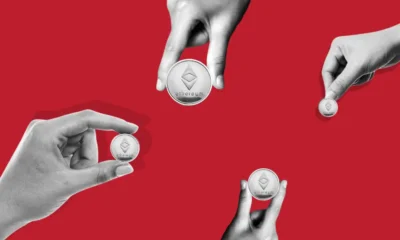
 Altcoins12 months ago
Altcoins12 months agoAccumulate these altcoins now for maximum gains
-

 Nfts12 months ago
Nfts12 months agoOG Crypto Artist Trevor Jones Unveils Groundbreaking Collection of Ordinals | NFT CULTURE | NFT News | Web3 Culture
-

 Bitcoin12 months ago
Bitcoin12 months agoBillionaires are selling Nvidia stock and buying an index fund that could rise as much as 5,655%, according to some Wall Street analysts
-

 Videos8 months ago
Videos8 months agoKamala just won the boner! [Bad For Crypto]
-

 Videos1 year ago
Videos1 year agoLIVE FOMC 🚨 Could be CATASTROPHIC for Altcoins!
-

 Videos1 year ago
Videos1 year agoSTOCK MARKET FUD! ⚠️ [Why This Is GREAT For Bitcoin Traders!]
-

 News1 year ago
News1 year agoA Guide for Newcomers & Beginners – Forbes Advisor
-

 Videos1 year ago
Videos1 year agoAttention: a historically significant BITCOIN signal has just appeared!







